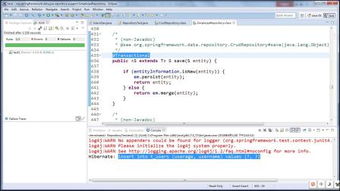Understanding CRUD Operations: A Comprehensive Guide

CRUD operations are the backbone of any database management system. They stand for Create, Read, Update, and Delete, and are essential for managing data efficiently. Whether you’re a beginner or an experienced developer, understanding CRUD operations is crucial for your success in the field of database management. Let’s dive into each operation in detail.
Create

The Create operation is the first step in the CRUD process. It involves adding new data to the database. When you create a record, you typically provide the necessary information that defines the new entry. For example, if you’re working with a customer database, you might need to enter the customer’s name, address, and contact details.
Here’s a simple example of how to create a new record in a database using SQL:
INSERT INTO customers (name, address, contact) VALUES ('John Doe', '123 Main St', '555-1234');
Read

The Read operation allows you to retrieve data from the database. This is the most common operation, as it’s essential for displaying information to users or for further processing. You can read a single record, multiple records, or even all records in a table.
Here’s an example of how to retrieve a single record from a database using SQL:
SELECT FROM customers WHERE name = 'John Doe';
Update
The Update operation is used to modify existing data in the database. This is useful when you need to change information about a record. For example, if a customer changes their address or contact details, you can update the corresponding record in the database.
Here’s an example of how to update a record in a database using SQL:
UPDATE customers SET address = '456 Elm St', contact = '555-5678' WHERE name = 'John Doe';
Delete
The Delete operation is used to remove data from the database. This is a critical operation, as it ensures that outdated or unnecessary information is removed from the system. When you delete a record, it’s permanently removed from the database.
Here’s an example of how to delete a record from a database using SQL:
DELETE FROM customers WHERE name = 'John Doe';
CRUD Operations in Practice
Now that we’ve covered the basics of CRUD operations, let’s look at how they are used in real-world scenarios.
| Operation | Example |
|---|---|
| Create | Adding a new user to an online forum |
| Read | Displaying a list of products on an e-commerce website |
| Update | Updating a customer’s shipping address in an online store |
| Delete | Removing a user from a mailing list |
Best Practices for CRUD Operations
When working with CRUD operations, it’s important to follow best practices to ensure data integrity and system performance.
- Use transactions: Transactions help maintain data consistency by ensuring that a series of operations are executed as a single unit.
- Validate input: Always validate user input to prevent SQL injection attacks and ensure data integrity.
- Optimize queries: Write efficient queries to improve performance and reduce the load on the database server.
Conclusion
CRUD operations are fundamental to database management and are essential for any developer working with databases. By understanding how to create, read, update, and delete data, you’ll be well-equipped to manage your database effectively. Remember to follow best practices and stay up-to-date with the latest database technologies to ensure your applications are secure and performant.








